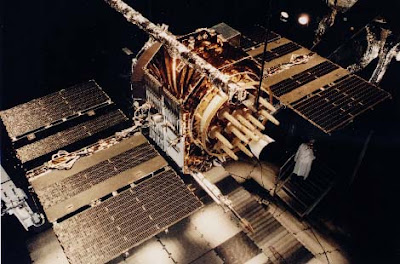Satellite broadband has long been considered somewhat useless. Both my mother and my mother-in-law have or had it at their places and it was painfully slow to use. Like dial-up slow. (Technically, it's broadband, but only just. How quickly we forget how slow dial-up really was.)
That's set to change with a new generation of satellites that will deliver up to 400 gigabits of bandwidth from each satellite. That's enough for over 40,000 simultaneous 10MB downlink connections. This should support up to 500,000 or more broadband users. And this is from a relatively small satellite. Bigger satellites and networks of multiple satellites are under construction.
In the past, these services have been slow and expensive, limiting them to emergency usage and remote access for users with critical business needs and deep pockets. The next generation will offer competitively priced access in a huge range of global markets, and much of it without the need for a big antenna that requires professional installation.
There's no way that satellite broadband will replace ground-based broadband for urban users. For a significant share of the market, however, that may not be necessary. Rural users and less intensive suburban users may find the price and availability competitive. And that could force ground-based operators to competitive upgrade their service in order to maintain a better level of differentiation.
Wednesday, March 16, 2011
Subscribe to:
Post Comments (Atom)

No comments:
Post a Comment